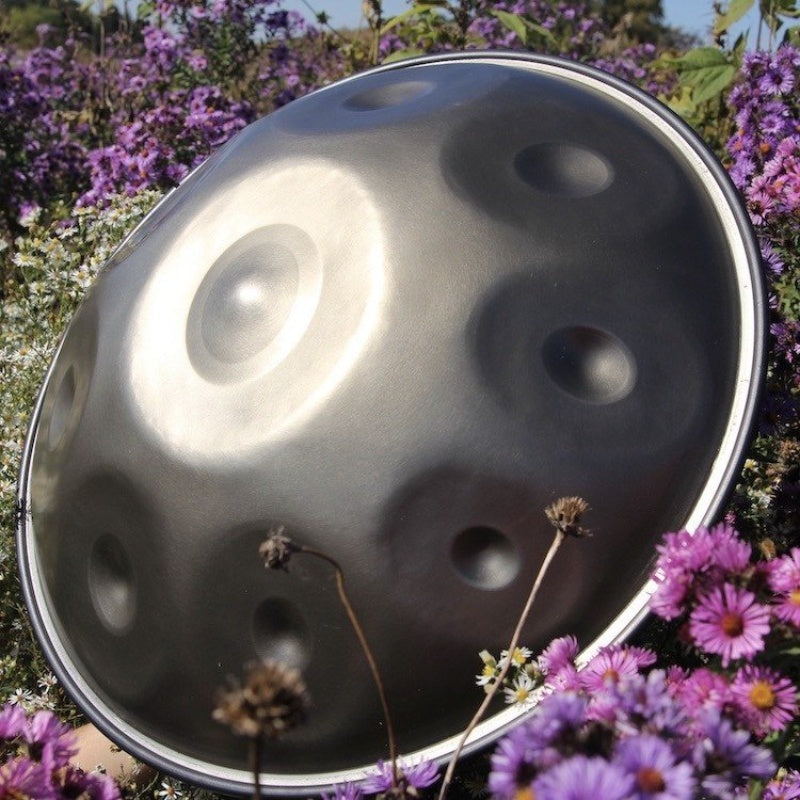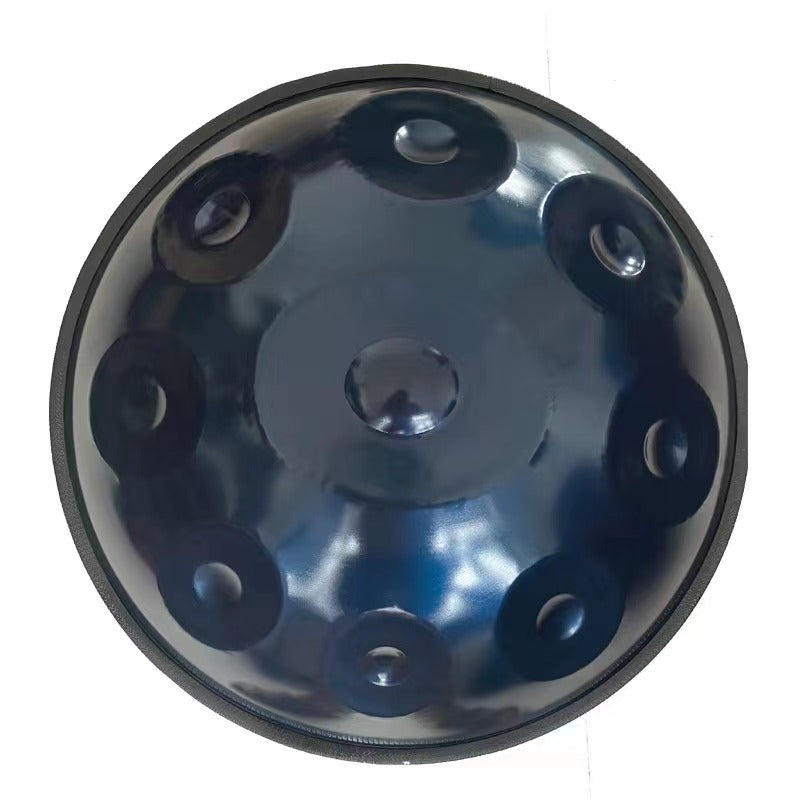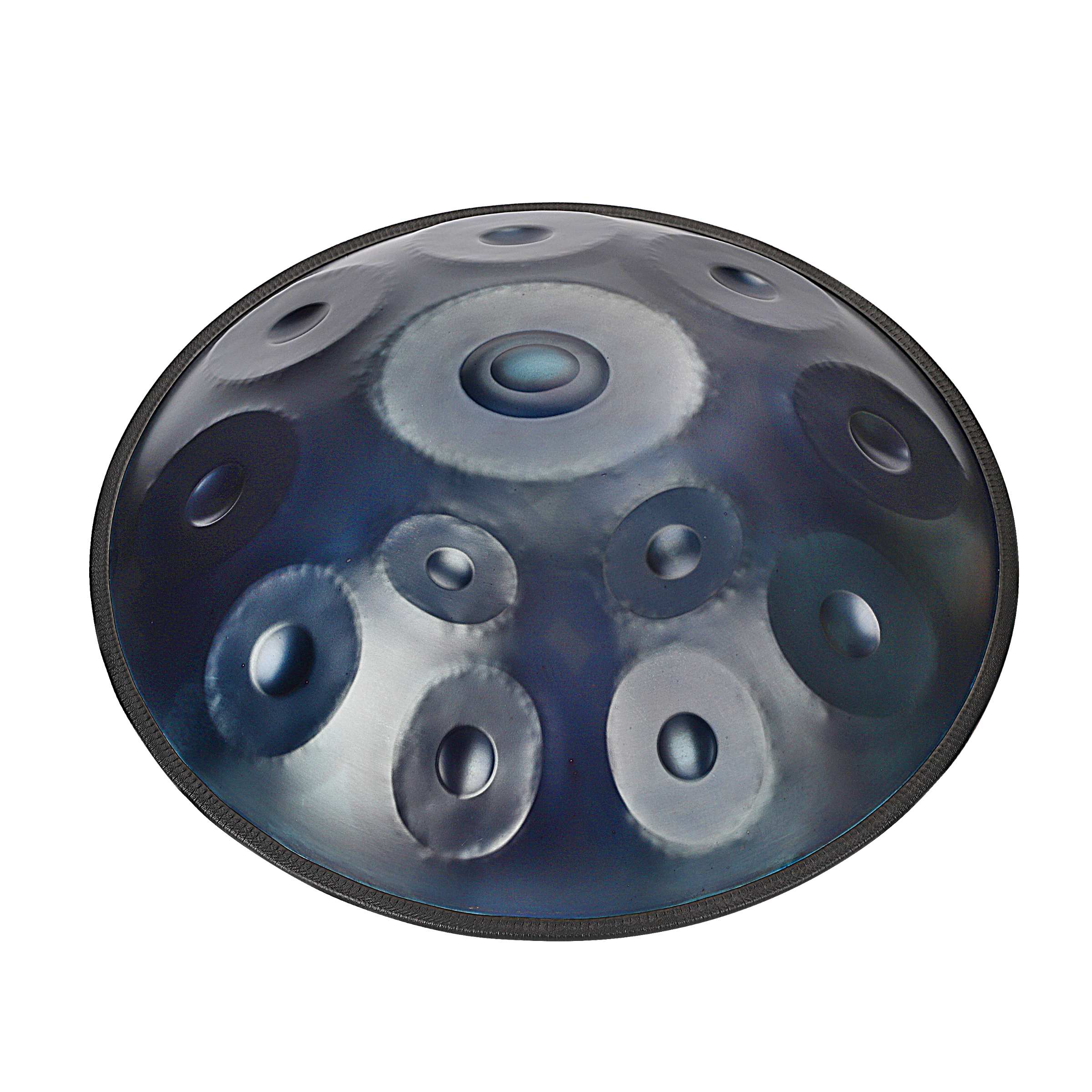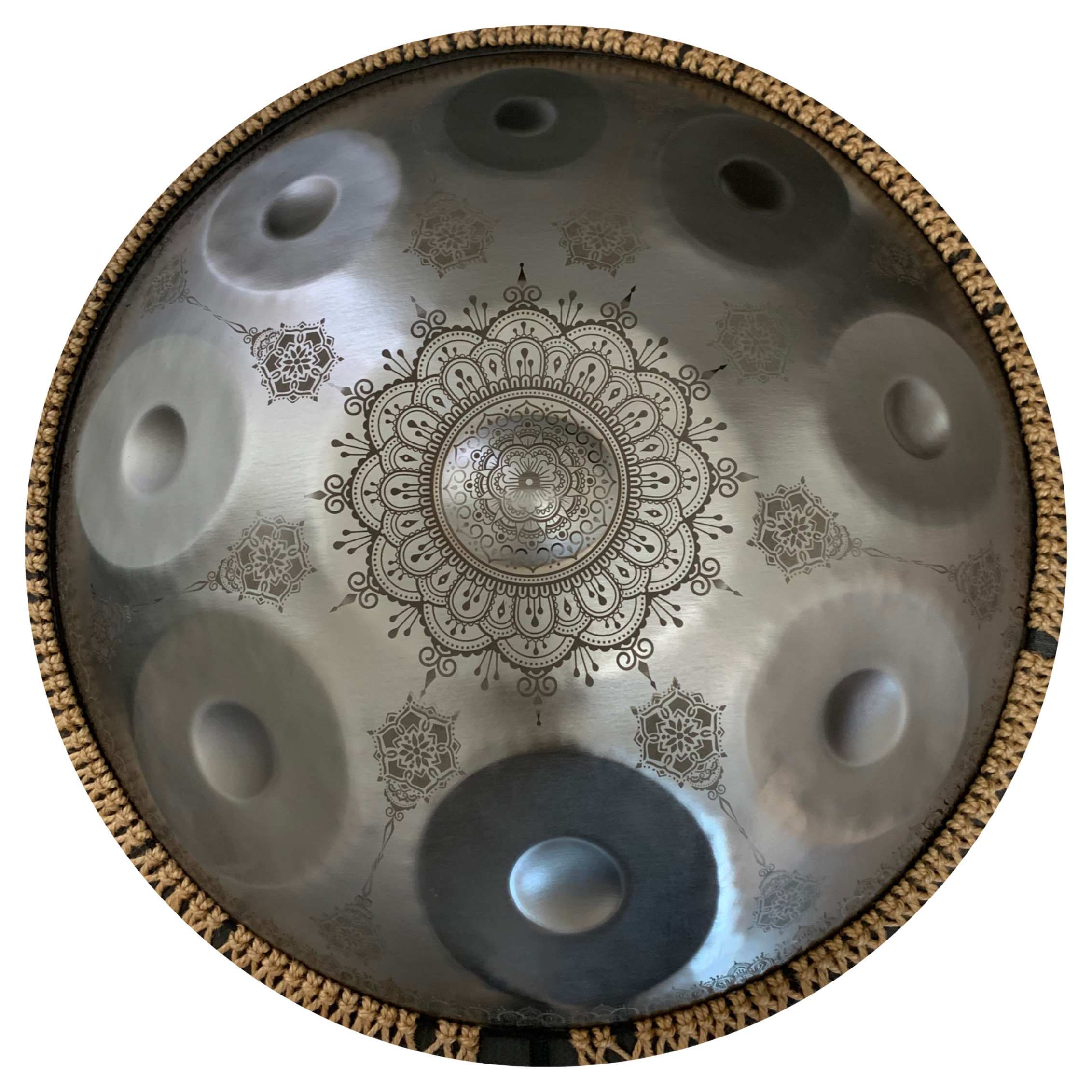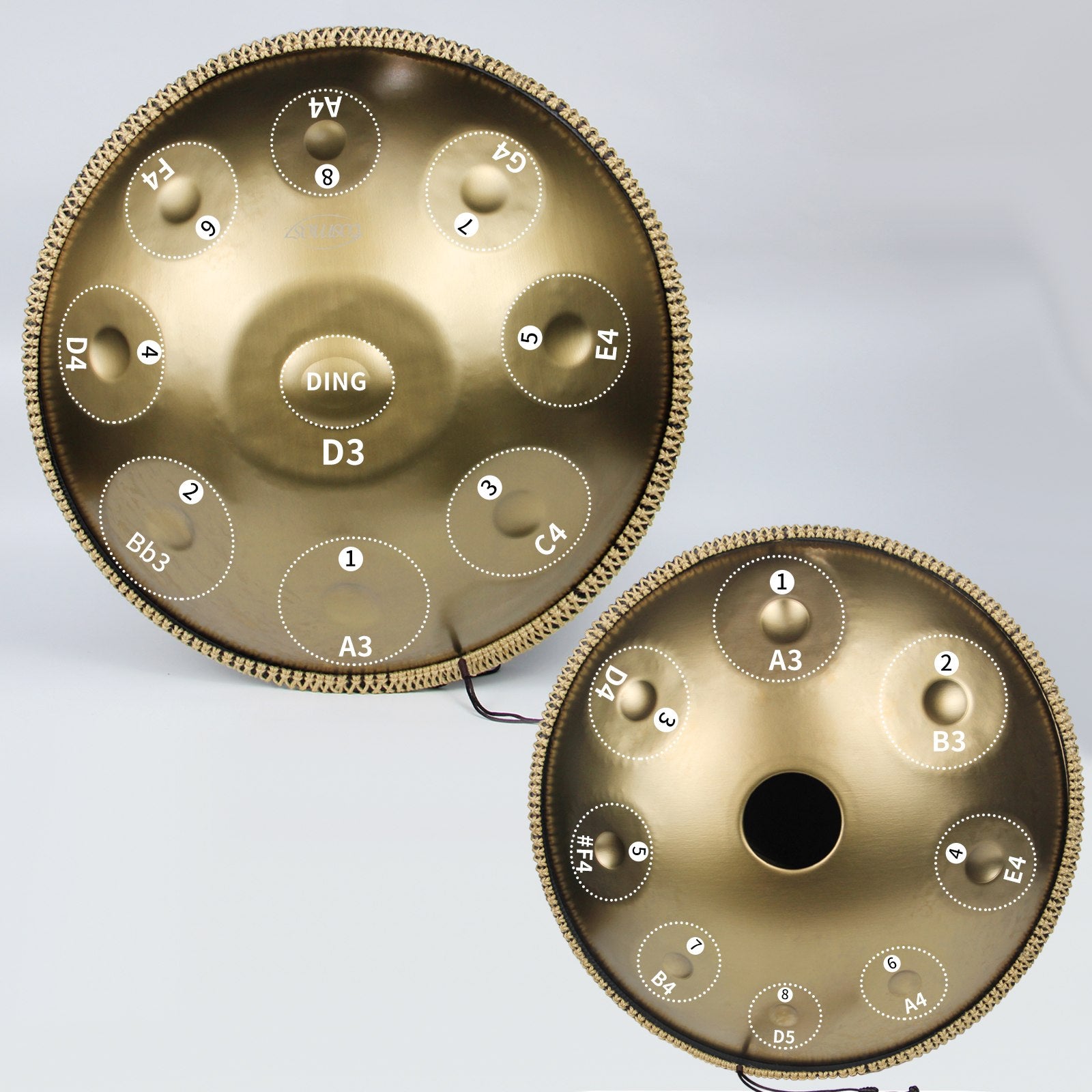The handpan and its mesmerising sound has made itself at home in the hearts of musicians and enthusiasts across the planet. Purchasing a handpan, whether you are an experienced musician or new to playing music in general, can be both intimidating and exciting. We help explain what makes handpans truly special and go through the process of buying one to find out which would best suit you.

What is a Handpan?
A hang drum is a melodious and harmonic instrument made of steel that can be struck with your hands. A pair of tone fields surrounding one note in the middle constitute two hemispheres made from steel plates. It is a struck idiophone of the ancient Family Lamellophone, that has been proven to create unique and calming sounds when being tapped lightly or interactively touched with sliding and gliding hands.
Why Choose a Handpan?
The sound of handpans are distinctive by the rhythmic and melodic elements that they provide. With the exception of concert use, they are multi-dimensional instruments that can be used across a wide and varied landscape in music genres as ambient, world and meditation or you pick which one. While the calming vibe of a handpan ensures that it is best suited for relaxation, therapy and personal enjoyment.
How a Handpan is Crafted
Most handpans are constructed from nitrided steel sheets of approximately 1mm thickness that have been formed with deep drawn techniques, either hammering or pressing. There are three layers in the production of a handpan:
- Forming the Steel: The steel sheets are formed into hemispheres using deep drawing processes or hydroforming.
- Finer Tuning: The top shell (the side that makes noise or the "ding" side) features a central dome, which has about 7 note fields hammered out and tuned to specific pitch.
- Shell Construction: The rim area of the two shells glued together with one resonace hole at bottom shell
- Finishing Tuning: The string gets adjusted again to project the expected pitch and harmonics in each note field.
Such characteristics can be found in the meticulous tuning and equally intricate crafting that each handpan maker (or "pantuner") offers, thus leading to a diverse spectrum of sound output from one instrument to another.
Things to Remember While Purchasing A Panini Handpan
If you are about to buy a Handpan. It all comes down some points. Here are the key points you should remember:
- Scale and Tuning
Major Scales: These are the very recognizable happy sound scales. Some examples are D Major, E Major and G major.
Minor Scales: These scales tend to sound sad and contemplative. For instance, D Minor / E minor/ A minor.
Exotic Scales - scales that tend to be less conventional and offer new sounds (often incorporating different ethnic music traditions).
- Material and Finish
Nitrided Steel: Durability and Rust Protection With a well balanced sound to it, and good sustain.
Stainless Steel: Consists of light, brillant and clear sound. It is more resistant to corrosion, but sometimes can be harder when it comes tuning.
Raw Steel :Used By Some Makers for a Unique Tone But Requires Further Up Keep to Avoid Rust
- Craftsmanship
Find respectable makers who have been around a long time too and know how to make great instruments with the technology available(commit!). It impacts the sound, durability and playability of an instrument.
- Price Range
Handpans - Prices start at $800 but can exceed $4,000 or more. Cost varies by tuner, material and how much work is to be done. Be wary of super cheap handpans, as this may compromise the quality.
- Availability
As most handpans are crafted by an individual there can often be a significant waiting list even from highly reputable makers. Think in advance and be cool about the wait for your instrument.
Where to Buy a Handpan
Some Options for Buying a Handpan Once You Are Prepared to Procure
- Directly from Makers
Buying direct from the manufacturer and you know it is a proper quality instrument. Do your research on the different makes and find reviews and sound samples to narrow down what you are after before moving forward.
- Community and Handpan Gatherings
These are great places in which to meet makers, try different sounding instruments and connect with the handpan community. These are one of the places you can typically buy handpans from.
- Online Marketplaces
- Websites like Handpan. There are also listings to buy/sell handpans on other websites like Handpan. org and different Facebook groups. Check over your purchases if you are buying from a person and have them let you know exactly what it is.
- Second-Hand Market
- Purchasing a second hand used cheap Handpan Inspect the condition of instrument or even try them before buying if you can.
Tips for First-Time Buyers
- Research and Listen
Instead of physical access:- Listen to different handpans and scales on YouTube. It will give you an idea of what kind of sound would like and also the scale which feels good for you.
- Set a Budget
Decide how much you want to invest Don't forget, you always get what you pay for in the long run when it comes to a quality handpan that holds its tuning.
- Connect with the Community
- Be active on handpan forums, social media groups and attend events. The community is helpful and offers good advice too.
- Try Before You Buy
- If you can, play the guitar before acquiring it. This will be able to help you feel its sound, the playing experience as well good for your characteristics.
- Ask Questions
- Definitely ask the maker or seller about how the instrument was made and what construction, tuning/maintenance is like for it. Well, A seller worth his salt will gladly provide you with all the info.
Maintaining Your Handpan
Maintaining the handpan in perfect condition is key. Here are some tips:
- Cleaning
- Wipe your handpan with a soft, dry cloth each time you play it to remove fingerprints, oils, and moisture. You can use a mild soap and water solution to clean it more thoroughly, but make sure to dry the instrument thoroughly afterwards.
- Storage:
- Keep your handpan in a dry, cool and shaded spot out of direct sunlight and away from extreme temperatures. Transport it in a case lined with padding to give it further protection.
- Avoiding rust:
- Regularly apply a thin oil film, such as Phoenix Oil or Frog Lube, to the surface of the handpan. This helps prevent rust in humid conditions.
- Professional maintenance:
- If your handpan gets out of tune or damaged, do not attempt to fix it on your own. Always consult a professional tuner who knows what to do to prevent further damage.
Conclusion
Buying a handpan can be quite the journey that entails much deliberation and research. If approached with the knowledge of this instrument and its sound characteristics, the purchasing game will be more transparent to you. Imagine the calming effect of a minor scale or the sense of happiness elicited by a major scale. Handpans provide moments that will make you come ashore safe and sound. As you set out to buy the drum, keep company with, be guided by, and give it time and understanding. When you find the drum of your dreams, you will begin the fascinating journey of musical vibes.

